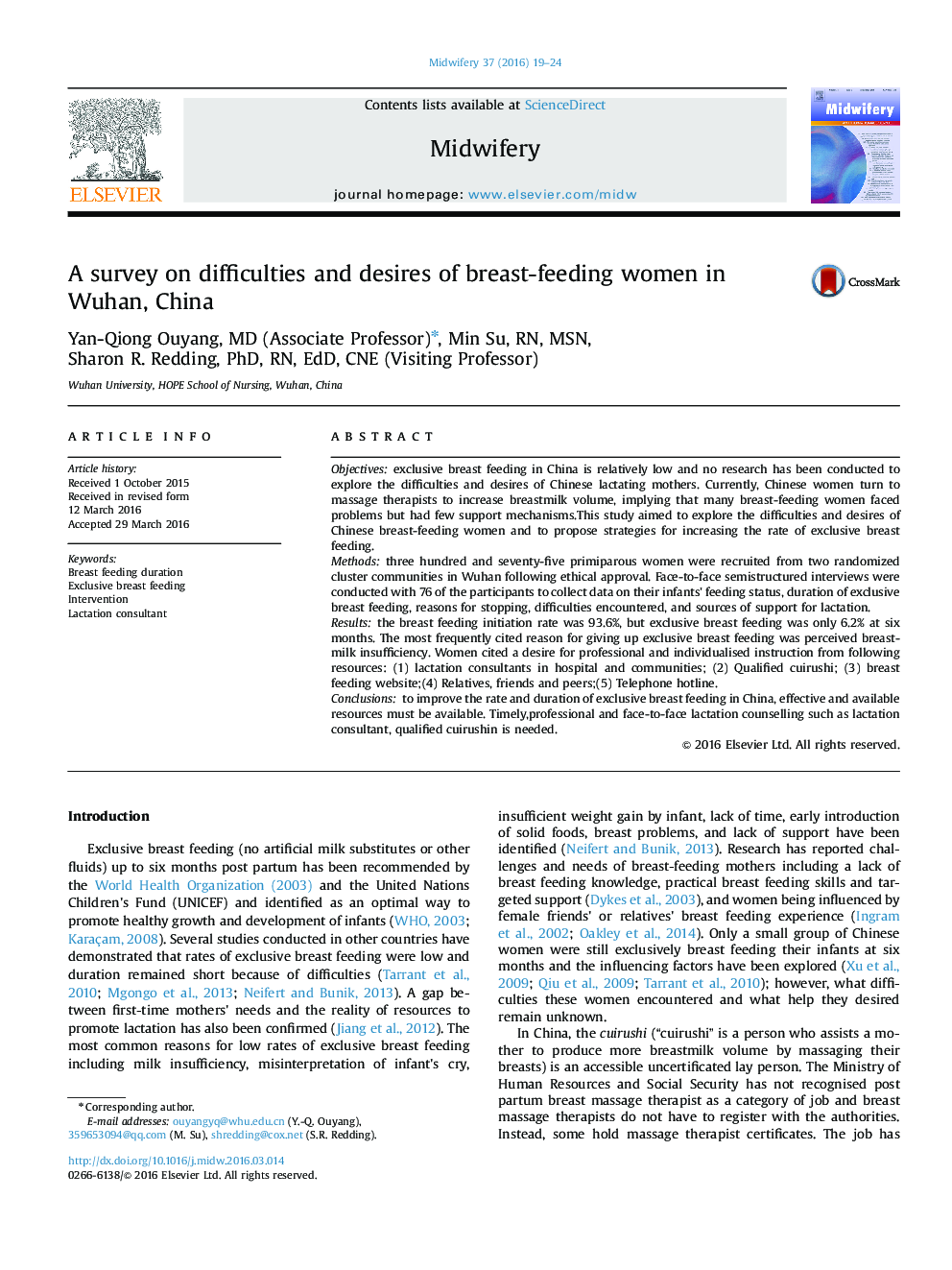| Article ID | Journal | Published Year | Pages | File Type |
|---|---|---|---|---|
| 1084450 | Midwifery | 2016 | 6 Pages |
•The rate of exclusive breast feeding was 93.6% at birth and dropped to 6.2% at the age of six months.•The most frequent reason for giving up exclusive breast feeding was perceived insufficient breastmilk.•Current findings highlight an important need for well-trained breast feeding counsellors to improve the rate and duration of breast feeding.
Objectivesexclusive breast feeding in China is relatively low and no research has been conducted to explore the difficulties and desires of Chinese lactating mothers. Currently, Chinese women turn to massage therapists to increase breastmilk volume, implying that many breast-feeding women faced problems but had few support mechanisms.This study aimed to explore the difficulties and desires of Chinese breast-feeding women and to propose strategies for increasing the rate of exclusive breast feeding.Methodsthree hundred and seventy-five primiparous women were recruited from two randomized cluster communities in Wuhan following ethical approval. Face-to-face semistructured interviews were conducted with 76 of the participants to collect data on their infants' feeding status, duration of exclusive breast feeding, reasons for stopping, difficulties encountered, and sources of support for lactation.Resultsthe breast feeding initiation rate was 93.6%, but exclusive breast feeding was only 6.2% at six months. The most frequently cited reason for giving up exclusive breast feeding was perceived breastmilk insufficiency. Women cited a desire for professional and individualised instruction from following resources: (1) lactation consultants in hospital and communities; (2) Qualified cuirushi; (3) breast feeding website;(4) Relatives, friends and peers;(5) Telephone hotline.Conclusionsto improve the rate and duration of exclusive breast feeding in China, effective and available resources must be available. Timely,professional and face-to-face lactation counselling such as lactation consultant, qualified cuirushin is needed.
